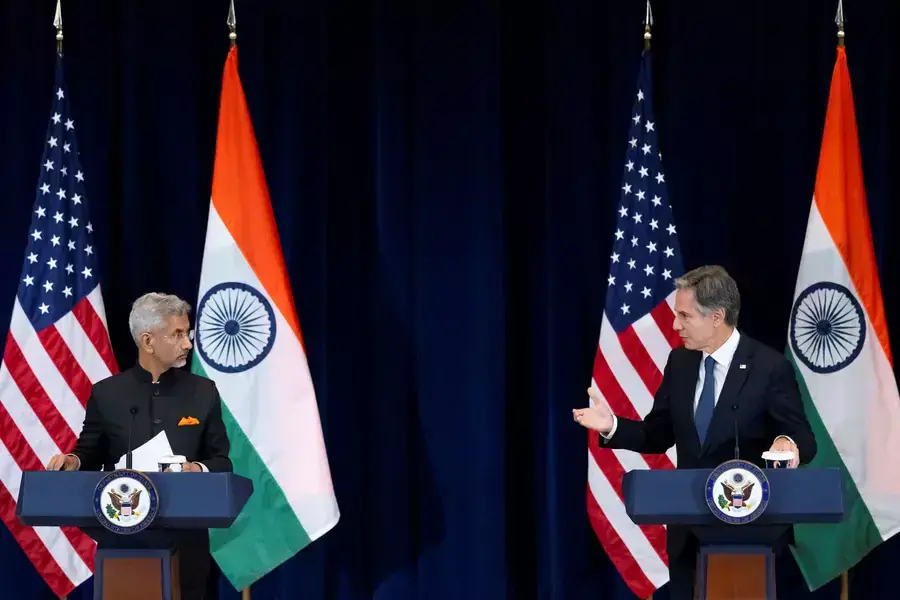The President’s Inbox Recap: U.S.-India Relations

The latest episode of The President’s Inbox is live. This week Jim sat down with Ashley J. Tellis, the Tata Chair for Strategic Affairs and a senior fellow at the Carnegie Endowment for International Peace.
U.S.-India Relations, With Ashley J. Tellis
Ashley J. Tellis, the Tata Chair for Strategic Affairs and a senior fellow at the Carnegie Endowment for International Peace, sits down with James M. Lindsay to discuss the challenges inherent in the evolving relationship between the United States and India.
They discussed the current tensions and challenges in the evolving relationship between Washington and New Delhi.
Here are three highlights:
More on:
1.) The 2005 U.S.-India Civil Nuclear Agreement marked a turning point in what had been a frosty relationship. During the Cold War, India pursued a policy on nonalignment and exploited the rivalry between the Soviet Union and the United States. Ashley explained that New Delhi also saw the United States largely as a successor to Britain in its efforts to manage an international order that wasn’t favorable to India. U.S. sanctions on India in response to its nuclear tests in 1974 and 1998 further strained relations. The 2005 civilian nuclear deal, which Ashley helped negotiate, changed the tenor of the relationship. It gave India the same privileges as being a Non-Proliferation Treaty signatory, without being a signatory itself. Since the agreement was inked, diplomatic, economic, military, and scientific collaborations have flourished.
2.) Washington now hopes that New Delhi will assist it in building a counterweight to China. Many U.S. policymakers see the United States and India as sharing both democratic values and an interest in countering China. Ashley noted that “New Delhi has a vested interest in making certain that Chinese power does not come to dominate Asia, because if China comes to dominate Asia unambiguously, then India will be condemned to playing second fiddle.” India and China are already clashing in the Himalayas over a disputed border.
3.) New Delhi is likely to disappoint these hopes. Ashley argues that India is unlikely to side with Washington against China unless the conflict directly affects India. While India is often romanticized as a friend to the United States, many forget that India isn’t a formal ally. Ashley points to two reasons why Washington can’t count on New Delhi to follow its lead. First, India shares a border with China, whereas the United States is an ocean away. Second, India is substantially weaker economically and militarily than China. Taken together, proximity and weakness make India subject to Chinese coercion in ways that the United States isn’t. As Ashley put it, India “looks at America’s conflicts with China as America’s conflicts with China, and does not want to make any decisions that prejudge or pre-commit it to working with the United States in the context of a geopolitical meltdown.”
If you’re looking to read more of Ashley’s work, check out his piece on the dynamics of the nuclear rivalry among China, India, and Pakistan. He explored India’s position of formal neutrality in response to Russia’s invasion of Ukraine and how it fits into New Delhi’s national interests for the Carnegie Endowment. He has also analyzed how New Delhi’s posture toward Russia tests U.S. patience.
Manjari Chatterjee Miller, CFR’s senior fellow for India, Pakistan, and South Asia, has also weighed in on India and U.S.-India relations. She recently co-wrote a piece for Foreign Policy that examined how Indian Prime Minister Narendra Modi has leveraged his term as president of the G-20 to bolster his own image. She argued in the Hindustan Times that the United States and India are in a better spot now than even a few years ago, even if they don’t align on all strategic priorities. She has also co-authored a piece arguing that the U.S.-India relationship could be strengthened through “solid trade mechanisms.” Manjari has identified India shifting away from Russia as a trend to watch in 2023.
More on:
 Online Store
Online Store